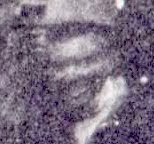
Photographer William Gedney recorded these moments in the lives of Kentucky mining families in 1964 and 1972. These images are from the Duke University Rare Book, Manuscript, and Special Collections Library, which provides the following description:
William Gedney made two trips to eastern Kentucky. In the summer of 1964, he traveled to the Blue Diamond Mining Camp in Leatherwood, Kentucky and stayed for awhile at the home of Boyd Couch, head of the local United Mine Workers Union. Then Gedney met Willie Cornett, who was recently laid off from the mines, his wife Vivian, and their twelve children. He soon moved in with the Cornett family, staying with them for eleven days. Twenty-two of the photographs from Gedney's 1964 visit to Kentucky were included in his one-man exhibition at the Museum of Modern Art in New York (December 1968 through March 1969). Gedney corresponded with the Cornetts over many years, and finally returned to Kentucky to visit and photograph the family again in 1972. In his notebooks Gedney writes about these lives he witnessed and photographed, the complicated relationships within such large families, the importance of the automobile. Gedney made notes about a creating a book dummy of the Kentucky work, but no completed dummy exists in the archive. With the exception of one image, the Kentucky photographs were never published during William Gedney's lifetime.










The first of these were taken the year I was born in Louisville. I was searching for images of that year and time. The mountains were and are another world from mine, but close enough that there were families in my urban neighborhood like those depicted here who had moved from down there to where I lived. I worked briefly for the UMW in DC as a young man due to a vestigial curiosity leftover from talking to former miners growing up. These photos make me recall other front porches and the large families that made my youth so full of incident and character both good and bad. This world has now vanished everywhere and that makes me sad. Intended perhaps to depict poverty they nevertheless reflect a wealth of human contact now missing from so many desperate lives. These pictures fascinate me.
ReplyDeleteThis comment has been removed by the author.
ReplyDeleteFuture Trump voters.
ReplyDelete